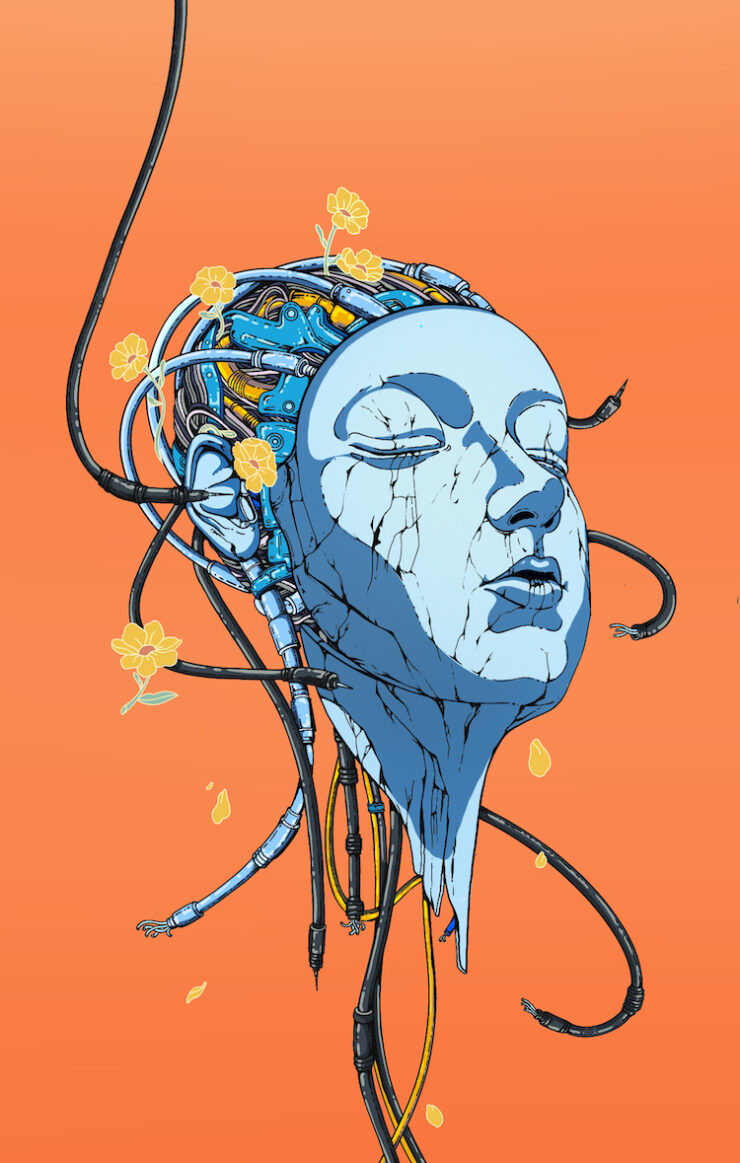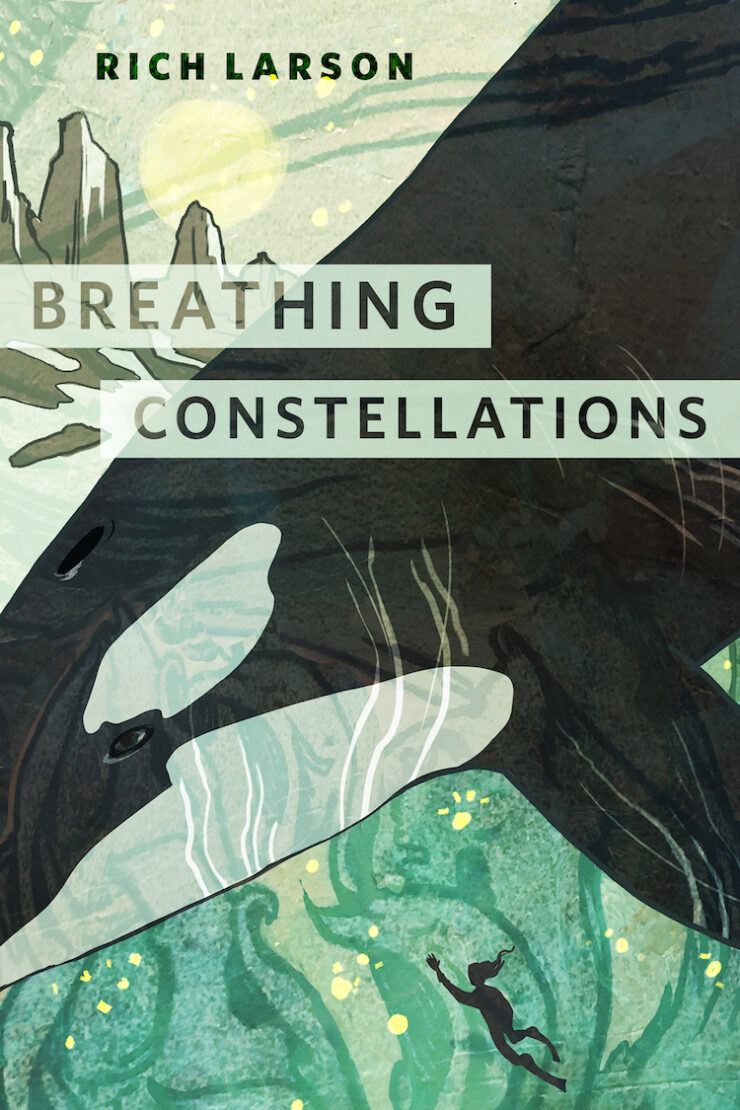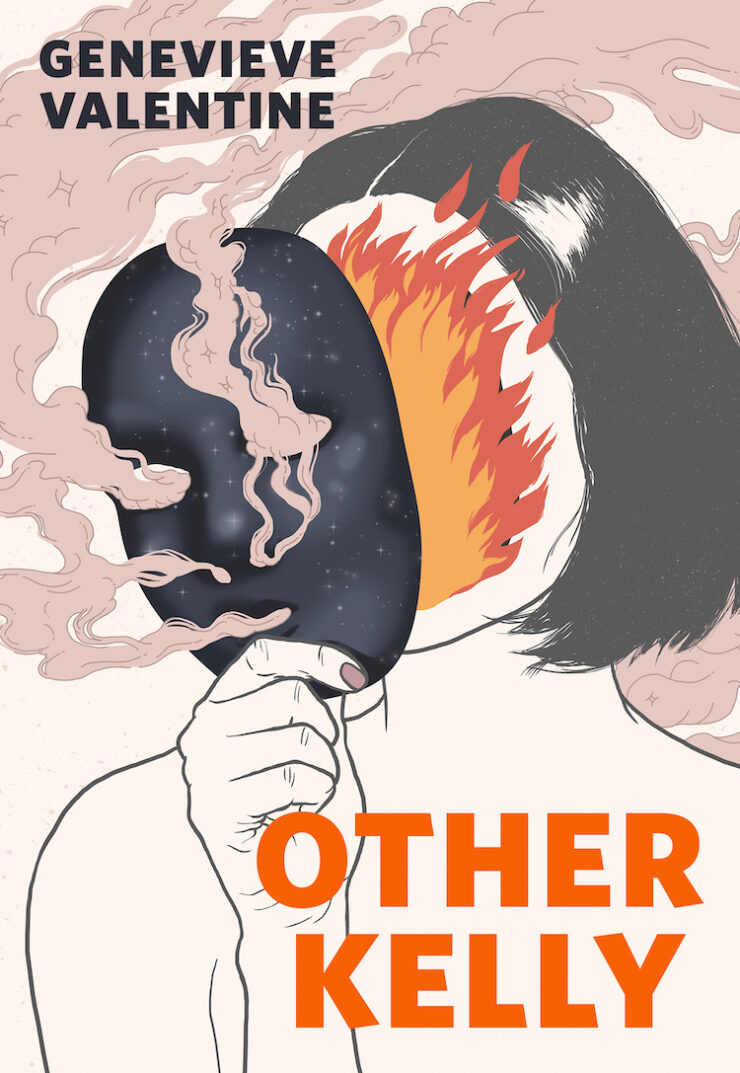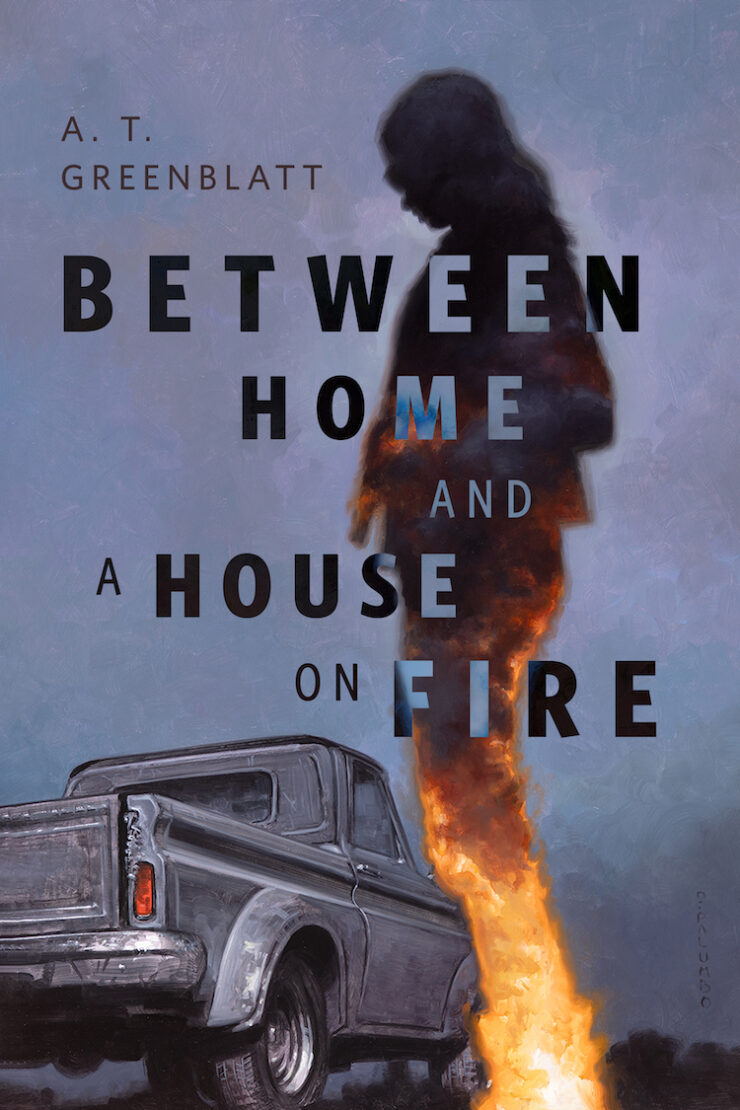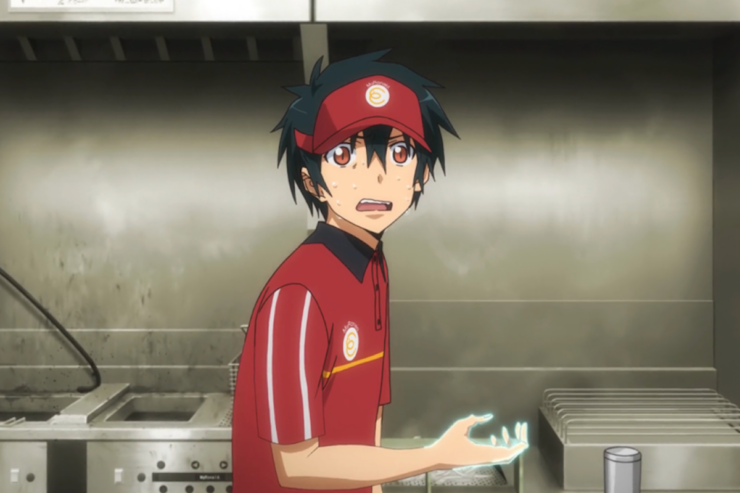Much has been said about the Japanese tradition of nomikai. After a grueling workday, employers and employees alike attend drinking parties, usually at yakiniku restaurants or izakaya. Loosening up is a communal activity, an asterisk to the workday where the rules of the office are altered. After a few foamy beers, employees can share their true feelings with managers without consequence. Resentments can be aired and, the following day, not a word will be spoken about it.
This tradition has faded over time, especially in a post-pandemic world. Over the two years I have lived in Japan, I have attended only one official after-work gathering, and by that time my Japanese coworkers and I were already comfortable sharing most of our thoughts during working hours. However, while every workplace is different, it remains true that in Japan, most people choose to keep their daily professional life and private life separated.
Arguably, this is true around the world, but few cultures maintain the divide quite as thoroughly. The concept of wa, or harmony, is essential to Japanese society, and community is prioritized over individuality at work. Westerners often misinterpret this to mean that Japanese people don’t appreciate individuality, but this is far from the case. In few countries are hobbies so devoutly pursued and celebrated; it is only that in Japan, there is an appropriate time and place for baring your soul.
In America, cosplayers ride the train and go to restaurants in costume; in Japan, cosplayers get changed at the venue in designated locker rooms that are booked months in advance. A Japanese office worker might spend all day in meetings only to return home to a vast collection of intricate model trains that none of her coworkers know about. A banker by day may work at a host bar by night, and it is not unheard of for married couples to work side-by-side and never disclose to coworkers that they are married.
I say all this not to make generalizations, but observations. This isn’t a sociology study; this is a geeky-ass post about genre anime. I am not an expert on Japanese culture and will never claim to be. But by golly, I have spent years of my life devoted to enjoying, studying, and writing about Japanese animation. And this tendency to divide private and public lives in a drastic fashion is often exaggerated in anime, especially where urban fantasy is concerned.
Tokyo in particular has been reimagined countless times as a city that not only does not sleep, but also gets especially strange and dangerous after dark. So today we’re discussing three Tokyo-based anime series that really highlight the difference between the self at work and the self at home.
Durarara!! Brings Ikebukuro to Life… and Then Some
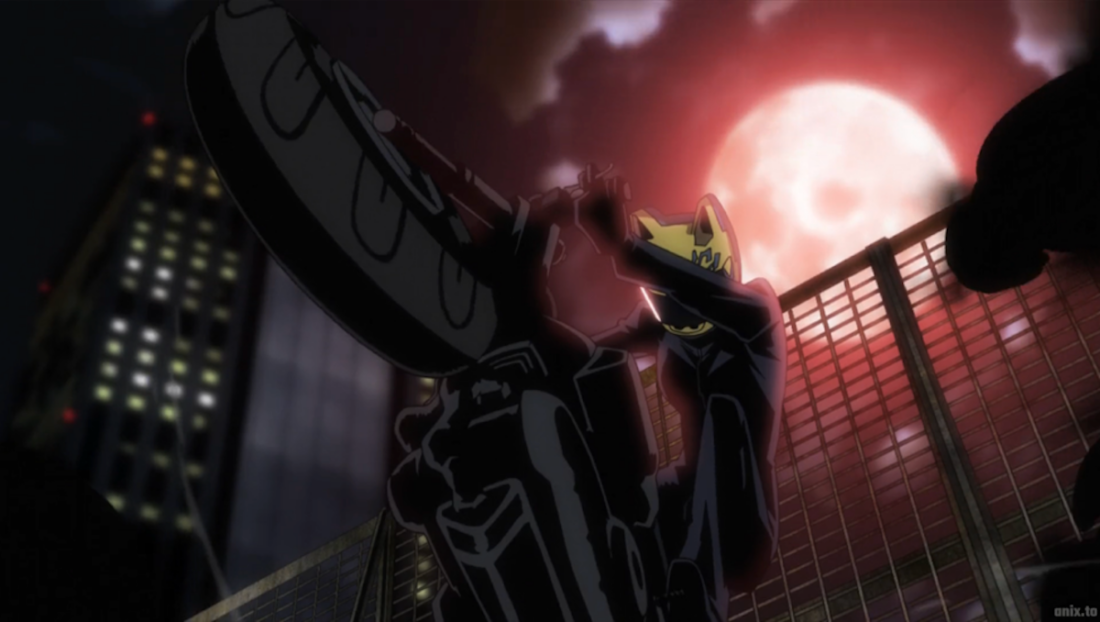
“Well, anything can happen in this city,” Kida tells his childhood friend Mikado when he transfers to a high school in Ikebukuro.
He’s not wrong. By episode one of Durarara!! we learn that the bustling Tokyo district has contended with everything from suicide pacts to gang violence and human trafficking. But that isn’t the half of it—and the other half is far stranger.
Ikebukuro is a real place, an entertainment district that doesn’t get the same tourist attention as Shinjuku or Akihabara. The anime captures the entire area in painstaking detail. Overpasses and parks, statues, train stations and intersections are impeccably recreated. Ikebukuro is depicted so accurately that it’s possible, even years later, to visit the show’s locations and mirror the screenshots. The result is an urban setting that’s almost hyperreal, and by contrast makes the story and characters feel even more unreal.
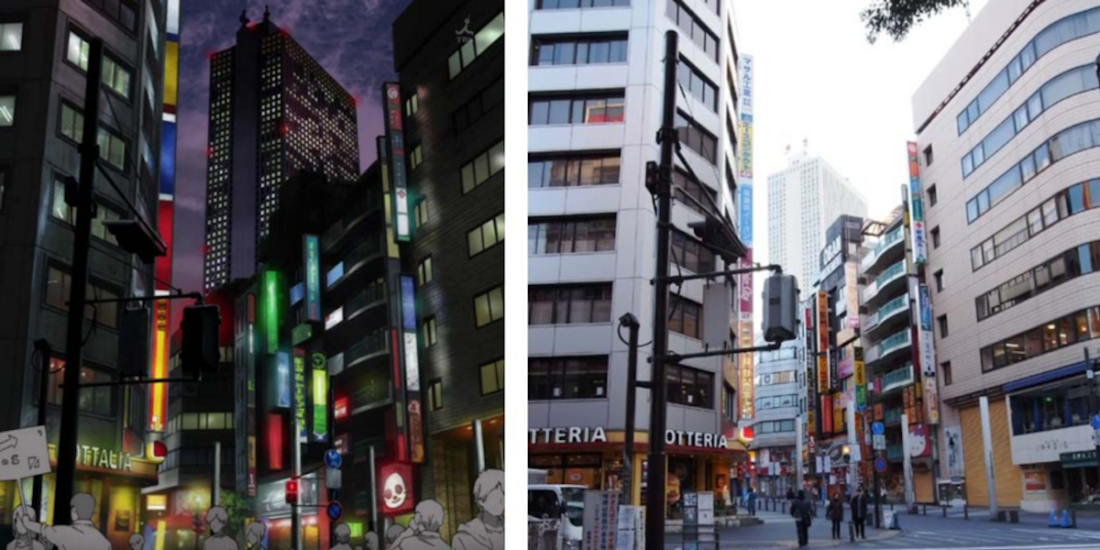
A motorcycling courier is actually a dullahan, an Irish fairy searching for her stolen head, her black bike a spectral steed in disguise. A shy high school girl is possessed by a samurai sword that thirsts for blood. Her classmates are best friends, but also secretly the heads of different gangs. A former bartender is strong enough to lift and throw vending machines at rowdy customers, and a local information broker is a sociopath who enjoys nothing more than manipulating all of these players for sport.
This may sound like a kitchen with too many cooks, but the beauty of Durarara!! is the steady, deliberate release of information as the series progresses. Each of the initial episodes is narrated by a different character and only gradually does the audience see their disparate storylines connecting. The show strikes a wonderful balance between mystery and dramatic irony, keeping the audience and characters in the dark until necessary. It’s a masterful puzzle whose pieces fall into place in ways that are almost always unpredictable. And without fail, the show’s greatest moments are those when the characters see each other clearly for the first time.
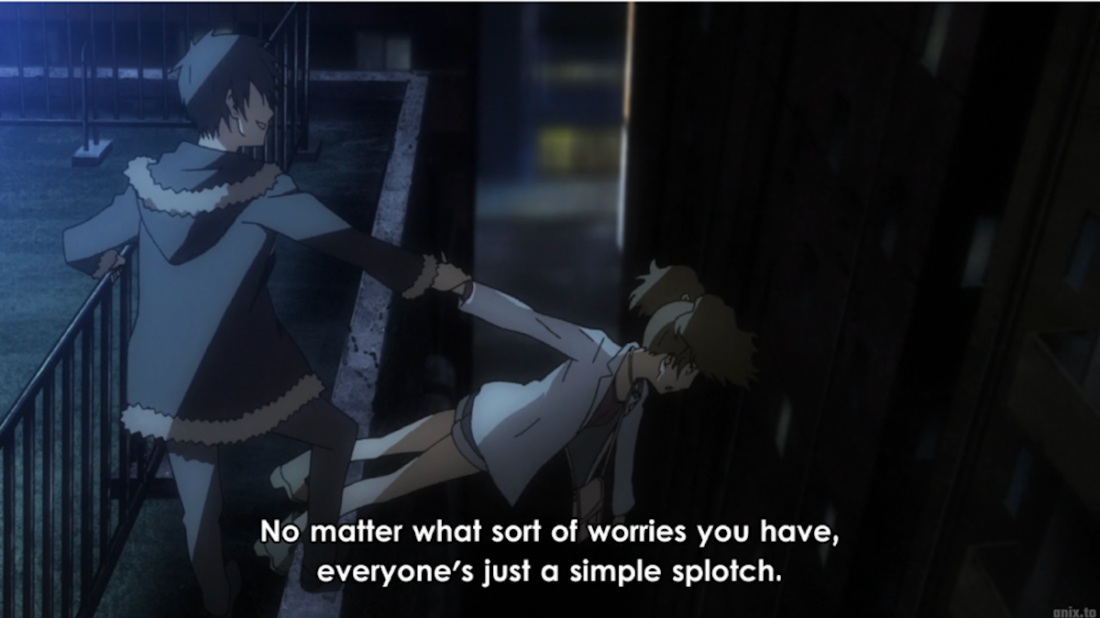
If every person contains bizarre multitudes, being an outcast becomes the norm, and being abnormal in Ikebukuro becomes the standard. And if these outcasts are a natural occurrence in Ikebukuro, Ikubukuro is subsequently transformed into a mythical place, no matter how realistically it is drawn. As Celty, the courier/dullahan/urban legend/do-gooder, says, “Sometimes… when you least expect it, you’ll get a tiny glimpse of another reality seeping into yours.”
Durarara!! is an ode to Ikebukuro and its inhabitants, a challenge to anyone who thinks that being unassuming is the same as lacking depth. Consider this: if all this action is taking place in a single Tokyo neighborhood, imagine what might be happening in wider Tokyo, Japan, and throughout the world.
Tokyo Ghoul Frames Humans as the Real Monsters
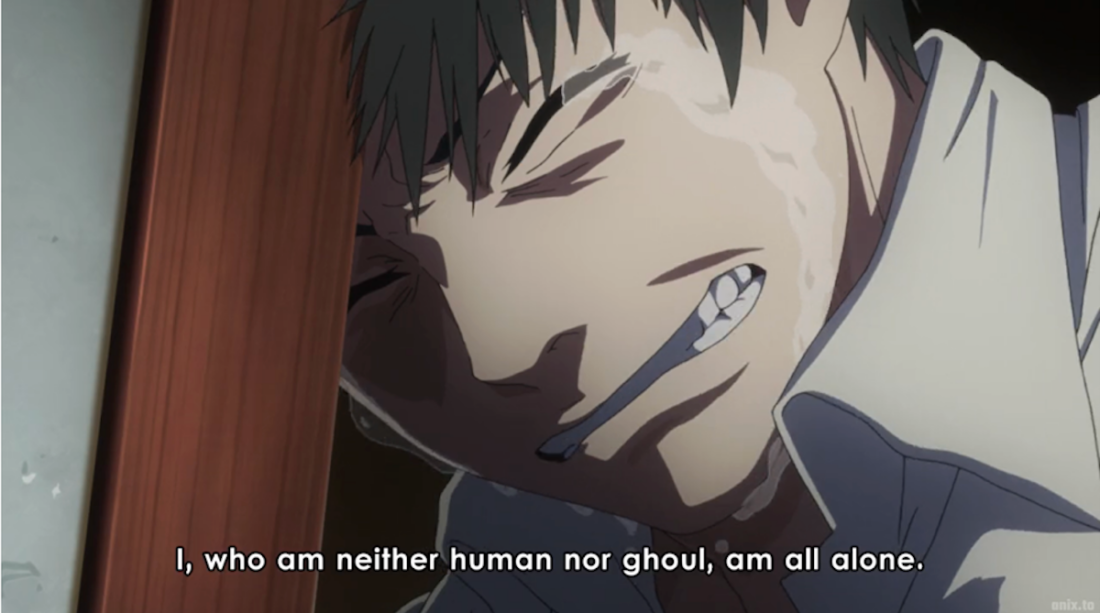
“If you want to live in the world of humans, you must learn about them.”
Say what you will about the franchise as a whole, Tokyo Ghoul is at its best when examining what it means to be human. In the first season, this dilemma is masterfully embodied by protagonist Kaneki Ken, a meek college student who becomes half-monstrous after the organs of a ghoul are transplanted into his body. Ghouls must eat human flesh to survive, which makes them predators; humans work hard to eradicate all ghouls from existence, which makes them predators. Kaneki, caught unexpectedly between these two worlds, can empathize with both sides, but his greatest fear is losing his humanity.
At first he wants nothing more than to salvage his relationship with a childhood friend named Hide. An elder ghoul tells Kaneki, as the new ghoul gags on a sandwich, “With practice, one day you can eat with your friend again.” But only if Kaneki can swallow his disgust and play human..
By day Kaneki and other ghouls in Tokyo’s 20th ward work at a kissaten, a classic Japanese cafe. They serve human and nonhuman customers alike, as it’s established that the only thing ghouls can stomach, apart from longpig, is coffee. After dark, the cafe serves as the governing body for the local ghoul population, providing aid to ghouls who cannot feed themselves, often by harvesting flesh from the bodies of suicide victims.
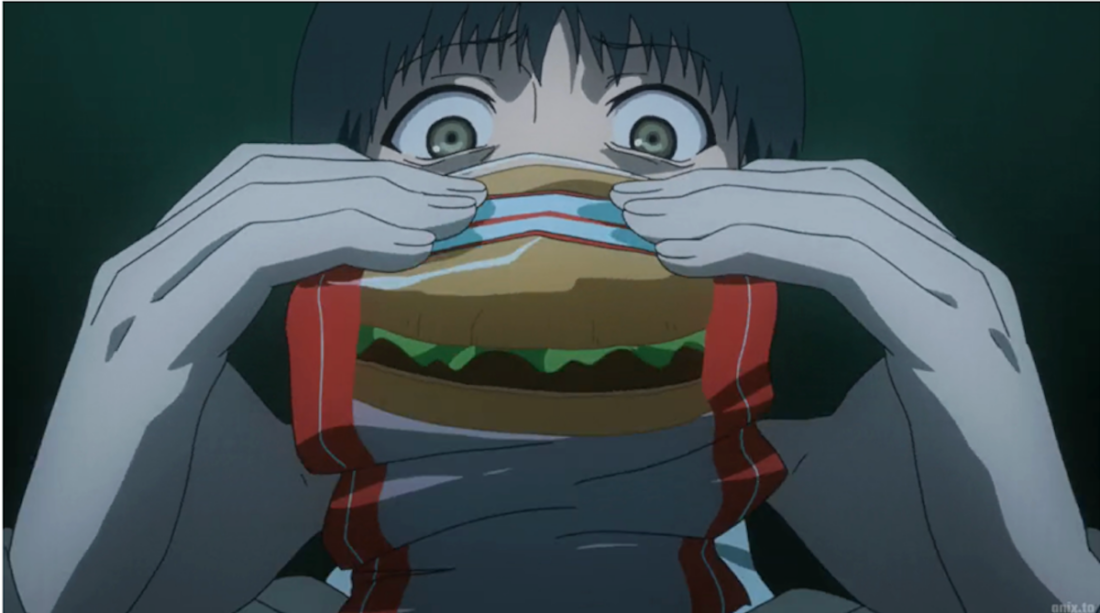
Tokyo Ghoul creates a world where the separation between a public and private life is not just preferable, but essential to survival. High school ghoul Touka eats her human friend’s homemade bento with a smile, only to vomit it up in a bathroom cubicle and spend the following few days too ill to function. “Gochisousamadeshita,” she says to herself all the same, thanking her friend for the meal.
Hiding in plain sight is never easy. A ghoul child named Hinami watches as her mother is killed by Mado, a professional ghoul-exterminator who really relishes his job. The next time Hinami faces Mado, he attacks her using weapons forged from Hinami’s mother’s organs, delighting in the little girl’s fear and horror.
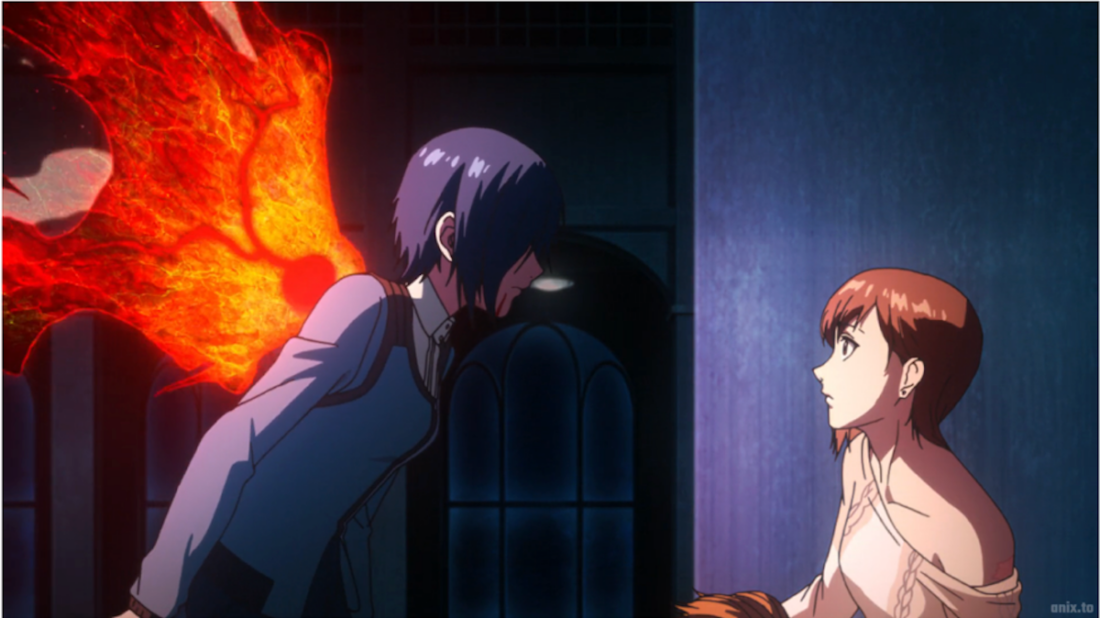
“Watching you ghouls imitate human behavior is so comical,” says Mado. But violence may be the single most human aspect the ghouls exhibit. It does not take long for Kaneki to doubt his desire to maintain his humanity—because what good is humanity if the humans are just as heartless as the monsters?
A simple life may be too much to hope for, but the ghouls hope for it all the same. By day the would-be monsters attend work and look after their families, study at universities and serve coffee to strangers. And at night, when hunting for flesh, ghouls wear masks to hide not their monstrosity, but their humanity.
The Devil Is a Part-Timer and the Allure of Normalcy
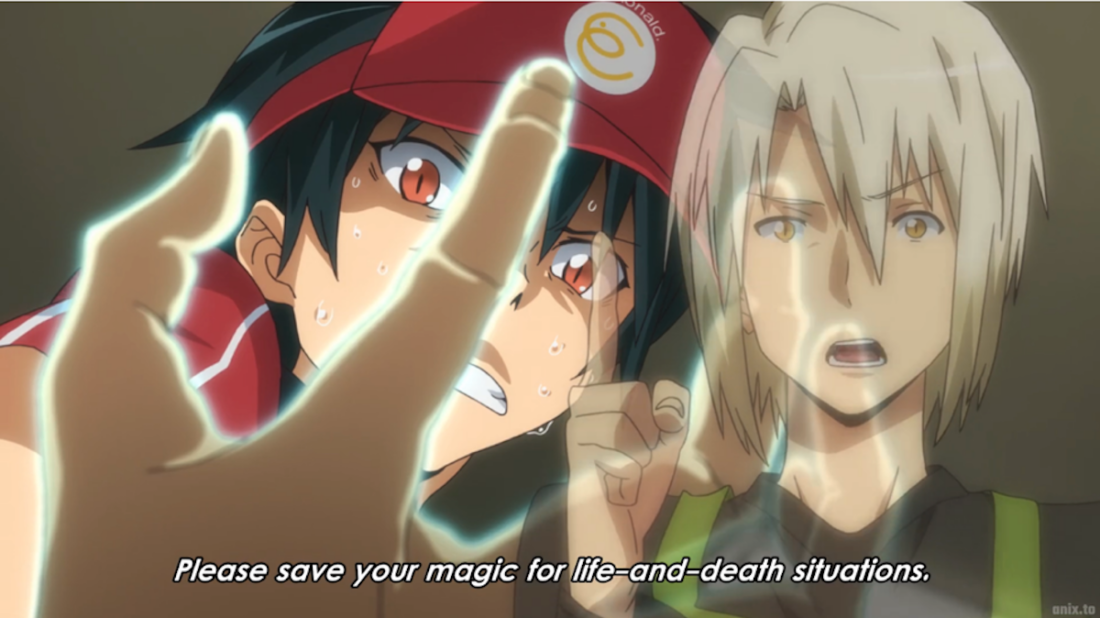
Satan, the Demon Lord of Enta Isla, foiled in his bid for world domination by human heroes, escapes with his loyal retainer Alsiel to a parallel world before he can be utterly defeated. He arrives in modern-day Tokyo with his magic all but depleted, trapped in a human body and unable to speak the local language. “Must be foreigners,” a confused police officer says before arresting the two assumed cosplayers for disturbing the peace.
To survive in a daunting world of monthly bills, intimidating landladies, and a fearsome dish called KATSU-DOOM (delicious katsudon), Satan adopts a human name, Sadao Maou, and takes up residence in a six-tatami mat apartment. For these transplanted fantasy creatures, making it in modern-day Tokyo proves truly challenging.
Maou takes a job at a local MgRonald’s fast-food restaurant, while his retainer fully embraces the role of house-husband, keeping the dishes done and Maou’s spending under control. When Emilia, a vengeful hero from Enta Isla, appears to wreak revenge on Satan, she too is taken off-guard by Earth’s lack of magic. When she dares confront Maou while he’s at work, he gives her the customer service smile. She promises Maou she will defeat him… but for the time being she’s working in a call center and spying on his weird little household, wondering what evil he’s plotting.
And it’s true that Maou is plotting—he’s plotting to get a MgRonald promotion. “I will dominate Japan!” he declares. “Part-timers can work up to being full-time employees!” It’s a delightful reversal, this story in which the real world proves more compelling than the fantasy realm left behind. Devil excels at finding humor in the most mundane of tasks, be it racing to the store to take advantage of a sale or debating whether or not Maou will use his last, precious ounce of magic to repair the restaurant fryer.
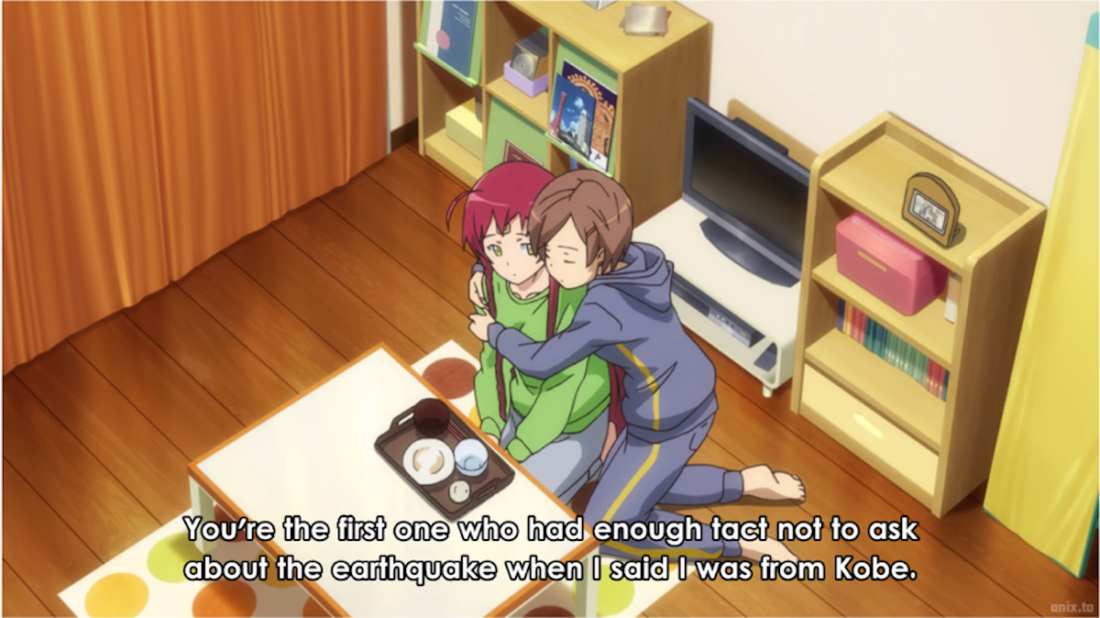
Maou may have fought, killed, and conquered for years in his homeworld, but the prospect of outselling Sentucky Fried Chicken proves infinitely more rewarding. Maou doesn’t want to “cause suffering in a world that’s treated me so well.” And this is the heart of the story, isn’t it?
In a lesser series, the demon lord realizing that he just wants a simple life would be the end of it. But Emilia doesn’t let Maou off the hook. After all, her village was destroyed and her father killed by his armies, her childhood stolen from her. Emi, sitting at the table in Maou and Alsiel’s dingy apartment, demands, “Why are you so kind to this world? If you’re capable of such kindness, why did you kill my father? You’re supposed to delight in the world’s suffering!”
“I’m sorry,” Maou replies. “I didn’t really understand people back then.” It feels less like an excuse and more like a revelation.
Maou apologizes and means it, because that’s what decent people do. Decent people the whole world over make mistakes and work tough jobs and tolerate constant global bullshit because, for most of us, life is worth the struggle.
It isn’t surprising that Maou finds comfort in a routine and existence that, while imperfect, offers daily moments of joy rather than endless suffering. At some point, his goal of conquering the world shifts to protecting daily life in Hatagaya, Tokyo and finally, to protecting the entire planet.
It’s the same for every Enta Isla immigrant, and there are a fair few of them. One by one, they find themselves living in or next to Maou’s place after failing to eradicate him.
When offered a chance to return to Enta Isla and regain his place in heaven, the fallen angel Lucifer, one of Maou’s resident freeloaders, declines the offer without hesitation, landing a devastating blow on the man who suggested it. “Heaven is a six-tatami apartment on Earth!”
So… What’s Our Takeaway?
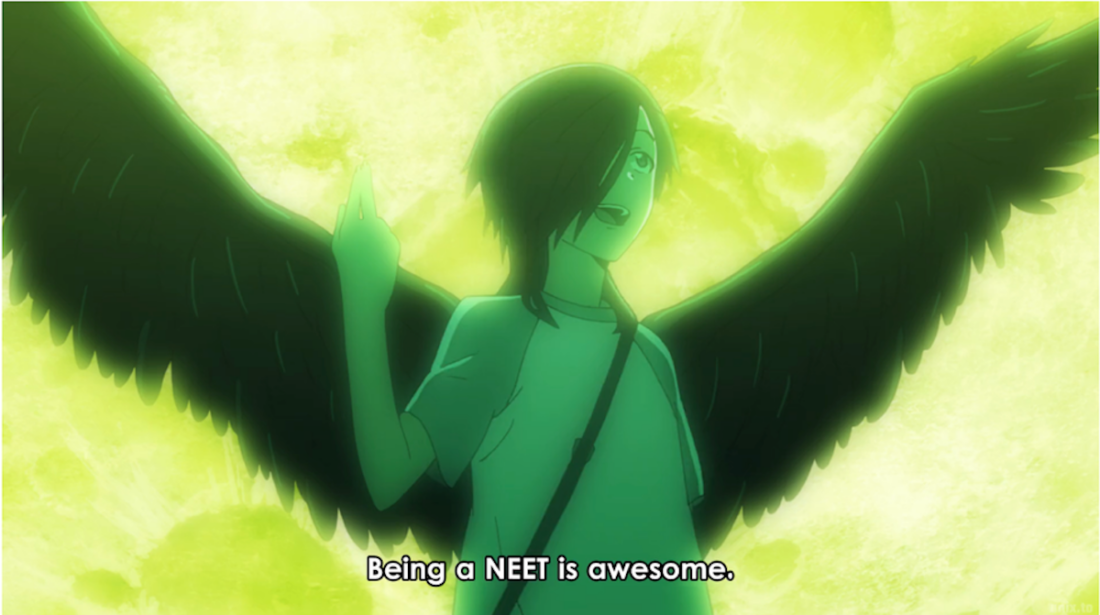
“出る釘は打たれる” translates, roughly, to “The nail that sticks out gets the hammer.” No one who lives or works in Japan goes through life without hearing this sentiment. The implication is clear; standing out is not recommended. But so much of Japanese pop culture rebels against this concept, and does so with gusto. Instead of assuming that people should not be unique, everyone is unique. But there is a preferable time and place for uniqueness, just as there is for conformity, if one wants to live a comfortable life.
With the lightest shift in perspectives, this concept borders on liberating. Bide your time and bite your tongue at work in order to protect what really matters to you. After work, you are free to be anything you want to be, in front of only those with whom you care to share yourself with. The duality of an identity need not be oppressive; it can be empowering.
The nail stays low when the hammer hovers because the nail is not an idiot, but when the hammer isn’t looking, that naughty freakin’ nail can do whatever the hell it wants. Sure, be boring by day. But by night? Be a little supernatural.
A quick note: Hi, all! I’m Leah, YA author and long-time otaku currently living in Tottori, Japan. I hope to keep covering anime here on Reactor. Whether you’re a fan already or this is your introduction, welcome!
Next time I’ll be writing about magical realism as depicted in anime based on the written works of Tomihiko Morimi, including The Tatami Galaxy and The Eccentric Family. Other series on the roster include everything from cult classics like Fullmetal Alchemist, Revolutionary Girl Utena, and Mushishi to modern gems like Chainsaw Man, Ya Boy Kongming!, and Frieren. Feel free to suggest more series and topics in the comments! There are endless series with SFF elements and I look forward to discussing them with everyone.
In this article:
- Durarara!! (Brains Base, 2010). Available via Crunchyroll, Hulu and Amazon Prime.
- Tokyo Ghoul (Studio Pierrot, 2014). Available via Crunchyroll, Netflix, Hulu, Amazon Prime.
- The Devil Is a Part-Timer (White Fox, 2013). Available via Crunchyroll, Hulu, and Amazon Prime.
Up next:
- The Tatami Galaxy (2010) Available via Crunchyroll, Amazon Prime, and Hulu.
- The Eccentric Family (2013-2017) Available via Crunchyroll, Amazon Prime, and Hulu.
- Night Is Short, Walk On Girl (movie, 2017) Available via Crunchyroll, Amazon Prime, and Hulu.


